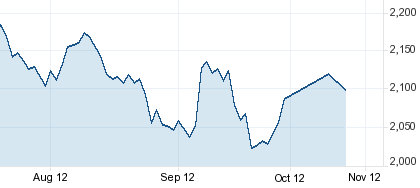
Main reference: Story in China Securities Journal
Despite the dour year for Chinese shares, over 800 firms are hoping to try their luck in the market, which some investors feel will crimp already tight capital flows.
Maybe these listco candidates are just all waiting for that break in the clouds before jumping in?
At last count, A-share aspirants totaled 818, with 155 capital-hungry enterprises eyeing a main board listing in Shanghai and a whopping 753 awaiting approval on the sidelines in Shenzhen – with 315 of these looking to go public on the ChiNext board, often called “China’s Nasdaq.”
A total of 90 firms have essentially made it through the gauntlet alive and kicking, and are merely awaiting the country’s bourse watchdog – the China Securities Regulatory Commission – to give the final green light.
The bear market and depressed investor sentiment that are the rules of the day this year in China are both getting no favors in terms of encouragement from the fact that the waiting list to go public continues to climb in numbers.
Nevertheless, a sizeable body of market observers is of the consensus that investors need not yank out their hair over the rising ranks of startups looking to add ticker numbers to their resumes.
They contend that the competition for financing will work itself out, and newly welcomed initiates will only be welcomed if there is a big enough capital pie to support the lion’s share of listcos.
In addition, they argue that the steadily expanding access that offshore funds are being afforded in China’s still relatively closed capital markets makes the prospect of a surge in IPOs all the less ominous.
The rising quotas offered to both QFIIs and RQFIIs are helping China’s A-share markets get onboard with international standards of openness and accessibility.

Therefore, opening the floodgates to new companies (ie: IPOs) becomes a far less frightening prospect when the floodgates for new investors (ie: QFIIs, RQFIIs) are simultaneously shouldered ajar.
More capital-hungry companies can be accommodated by more raw capital flowing into the markets.
In fact, they also say that a bigger threat to liquidity is an unchecked flood of additional shares issued by struggling firms.
Not only does this impact negatively on strained investment fund flow with a sudden availability of quality-hindered shares, but it also does nothing to address the need for more diversity, variety and choice among the broader investment community.
Uninhibited and unhindered market forces are the best means by which to separate the wheat from the chaff, and let the investors themselves rummage through all the offerings and make their choices accordingly.
That being said, firms looking to go public will not do so at any cost.
They themselves are no doubt waiting for a break in the cloudcover to launch their shares.
And with the protracted slump that A-shares have been enduring these past several months, one can only expect that the bottom will soon be reached and a protracted recovery phase can begin in earnest.
See also:
Gold Or Homes? JIM ROGERS Tips On China
Main China Investment Themes For 2013
BLAME GAME: Finger Pointing Futile Amid China Slump
Mainland Money Flooding HK Market







